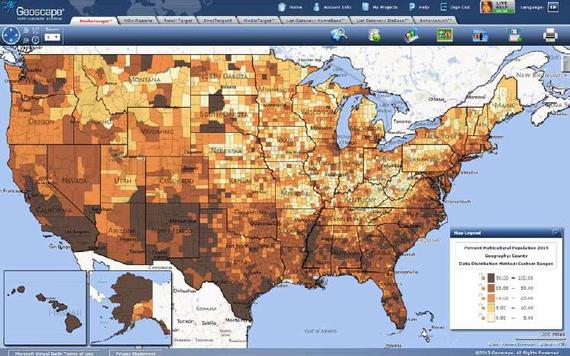As a parent, I always get a strong feeling of change when my children go back to school. It marks an official milestone where your children are one year older and adapt to new teachers, lessons and classmates. Before you know it, they grow into a new college in a new city or state, making this time of year a valuable opportunity to reflect on not only my own children, but the society in which my children are coming of age.
It's especially important to reflect this year because the changes are more global and permanent. This month, racial and ethnic "minorities" (though that term becomes more inaccurate by the year) now make up the majority of enrollees in public schools. It's a trend that will only accelerate. Specifically, the U.S. Department of Education reports that in the next ten years, white students will decrease by six percent, while the Hispanic student population will increase by 33 percent, Asians American students by 20 percent and Black students by 2 percent.
But does an increasing mix of ethnicities in schools mean an increase in our nation's diversity in universities and high-paying jobs? Not really. There have been several recent studies from UCLA showing that school diversity is actually down, as populations become increasingly concentrated, they become segregated as well. Furthermore, as school performance and poverty increasingly become linked, it leads many families to move to districts and neighborhoods with better performing schools - if they have the resources to do so. Those who cannot are stuck in schools with fewer resources.
As both a consultant on economic and demographic trends and an advocate for better understanding the New Mainstream, it's a development that troubles me. While the education debate goes far beyond demographics, there are several key components that can help our society better-understand this condition.
One: Diversity goes beyond differences in race.
As a society, we tend to make large generalizations about groups of people who are quite distinct in many ways. But our multicultural population is diverse and increasingly complex on a myriad of levels, such as educational attainment, acculturation, language, income level, country of origin, religious preference, etc. The challenges of a predominantly African American school in Ohio differ widely from the challenges of a predominantly Asian school in San Francisco. For example, K-12 schools in northern California with high concentrations of Asian students might lead in academic performance, whereas schools with high concentrations of Hispanics and African Americans may be challenged when it comes to standardized test performance. Therefore, each situation is distinct and the student enrollment is inextricably linked to the ability of parents to reinforce and supplement education in the schools.
Two: Diversity is pervasive throughout America.
As multicultural groups begin to acculturate, their population will spread throughout the entire country. The fastest-growing states for Hispanics happen to be located in the Deep South, for example. Population diversity is not confined to Border States - it's a phenomenon that affects the fiber of our entire country. It's only going to grow, as shown by this map of predominantly minority counties in 2019.
Three: Diversity does not mean underperformance.
While in the past, ethnic concentrations were associated with poverty, and lower educational attainment, quite the opposite is true with most Asian cultural segments, as they tend to outperform all other groups in the classroom and in the certain sectors of the workplace. This means that there are many cases where diversity brings school performance up, not down.
As a society, some feel we are resisting the same diversity that has made America the greatest and most welcoming country in the world. If you believe that no single group is born with a greater or lesser capacity to learn, then we must embrace education as a way of improving the standard of living for households as well as the economy as a whole - through a stronger and more enduring tax base to fund public services such as education. The new American mainstream requires that we invest both in education of students and the ability for parents to prepare the youth of our country to succeed in an increasingly competitive economic environment. The nation will benefit from this investment for generations and aging populations will depend increasingly on the younger populations who will have to sustain the ascent of America that the 20th century witnessed - through the 21st century and (hopefully) beyond.
Statistical References: U.S. Department of Education, UCLA, Geoscape® American Marketscape Datastream Report
